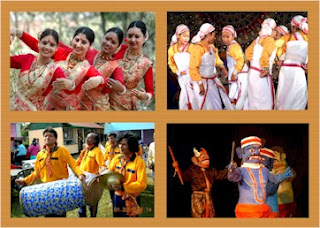A Tragic Beauty : By Vinod Mehta
A Tragic Beauty
Vinod Mehta is in love with the idea of Meena Kumari, giving his reissued biography of the star a peculiar spark.
 Reading a stray passage from this biography, with its frequent, proprietary use of “my heroine” and “my tragedienne”, you might assume that Vinod Mehta was compulsively driven to write it after years of fawning over Meena Kumari. Take the terms in which he celebrates her Sahib Bibi Aur Ghulam performance: “Beautiful. How beautiful she appeared… she created an environment of pulsating, titillating and mouth-watering sexuality.”
Reading a stray passage from this biography, with its frequent, proprietary use of “my heroine” and “my tragedienne”, you might assume that Vinod Mehta was compulsively driven to write it after years of fawning over Meena Kumari. Take the terms in which he celebrates her Sahib Bibi Aur Ghulam performance: “Beautiful. How beautiful she appeared… she created an environment of pulsating, titillating and mouth-watering sexuality.”
But the book — first published in 1972 — was a commissioned project, and the style inspired by the New Journalism of Norman Mailer and others, which had so captured the young Mehta’s imagination. He is honest about this: it may even be said he takes introspection to showy extremes, repeatedly wondering about his own qualifications, noting that he had been cut off from the Bombay film industry for years, and admitting that his initial interest in Meena Kumari came via a larger fascination for another tragic star, Marilyn Monroe. In this light, another confession is revealing. “The woman whose portrait I had been asked to sketch,” he writes, “interested me immensely — not while she was alive but once she was dead.”
Which implies a mild form of necrophilia underlying the biographer-subject relationship. If that sounds morbid, consider that even Meena Kumari’s role as Chhoti Bahu (which paralleled aspects of her real life) involved her casting a spell on the film’s hero from beyond her grave.

Meena Kumari: The Classic Biography, Vinod MehtaHarperCollins 248 pp; Rs 350
Mehta worked hard on this biography, speaking to nearly all the key figures in his heroine’s life and reconciling their often-contradictory stories into something resembling a narrative: the biographical meat is here, along with more abstract musings on Meena Kumari as an actress and a woman. Notably, he is very much a presence in this book. His voice — an opinionated one, sometimes witty, often bombastic, mixing sympathy with snark — comes through on every page, even the ones dealing with dry facts: a section about Meena Kumari’s (or Mahjabeen Bano’s) early years as a child artiste includes the aside, “Purely on a personal level, I find my heroine’s film name nondescript, sterile and flavourless… She deserved something better.” Offering a sociological summary of the year in which she was born, he notes: “You could get nicely drunk for 84 paise, buy a kilogram of sugar for 3 paise… find a decent whore for Rs 4.”
The writing is uneven — fluid and self-conscious in turn; showiness and grammatical awkwardness run together in sentences like “She set foot on this earth, head first, in the early hours of 1 August 1932”. But there is something refreshing about a book on the Tragic Hindi Film Heroine being written in a humorous (yet affectionate) tone by a UK-returned 30-year-old hung up on Gonzo Journalism. Meena Kumari is often whimsical (Mehta likens the Dharmendra-Meena Kumari romance to the one between Lady Chatterley and Mellors!), but I’ll take a book like this — however self-indulgent it might get — over a dry, impersonal one. We already have too much of that sort of film writing

.jpg)
Comments
Post a Comment